Back in Dimapur everything was relaxed and warm. No doubt a stark contrast to Imphal where Prime Minister’s Modi visit by all accounts was a crowded and a complete success. As I relaxed in my friend Nungty’s flat, Modi was in a plane on his way over to Dimapur for the night. In the morning he was driven up to Kohima to open the Hornbill Festival on a hastily upgraded road. I had decided that after the curfews and general strikes in Imphal, I should give his visit a wide berth, so remained in Dimapur. Judging by all the subsequent media reports this was an equally well received and crowded visit.
I amused my self in Dimapur awaiting the Prime minister’s departure by going shopping in the sprawling bazaar called “Hong Kong”
. Here hundreds of small private stalls are crammed into tiny lanes, selling all many of fashions and other goods piled high. The crush was so large, that even the temperature inside Hong Kong was noticeably warmer than any where else in Dimapur. I was glad to have one of Nungty’s cousins to accompany me, kindly making sure I did not get lost, overcharged and ensuring I could return to her flat.
On the following day, Modi was gone and the Hornbill Festival was now open, so I packed and got ready to leave to travel up to Kohima. Nungty had introduced me to one of her neighbours involved in tea production and he had kindly offered me a lift up to Kisama and the Hornbill. This was luxury.
The road to Kohima had transformed from a pot holed mess to a flat plausible highway. It was only Modi’s presence that had promoted this transformation. It was though just “cosmetic,” as Langa would say. Congestion was now the problem and despite the ever present roadblocks we surprisingly made good time. Once we had navigated Kohima, the traffic crawled to a complete standstill outside Kigwema and Nino’s Greenwood Villa. In the end as we were bumper to bumper, I decided to get out and walk thanking Ki Santam for his generous lift. I was still oblivious to the nature of the hold up, but on rounding a tight corner lined with the queuing cars I found myself in the middle of a stone pulling ceremony with the local Angami tribe
.
Close to a thousand Angami men lined the main road to Imphal, each holding onto what appeared to be part of a substantially sized creeper vine that stretched a good kilometre back to a huge stone or monolith. This cut rectangular stone (about the size of a gigantic door but many times thicker) was lying on a wooden cradle, on top the bitumen and tied up with the creeper. Dressed in startling Angami outfits sporting dramatic circular headgear, the men chanted a low decibel series of commands and suddenly everyone started pulling this huge stone up the road. It looked like some sort of organised chaos with the Angami warriors pulling and the odd tourist scampering out the way. Everyone strained to take the weight of the stone although the children and young boys at the front of the lines of men looked to be doing little compared with those men surrounding the huge monolith. At the back the stone skidded along the road aided by the pouring of water onto the bitumen surface
. No potholes here.
On past Nino’s house the stone skidded and then round the corner through a narrow gap with village buildings and small shops lining the road. It got briefly stuck transversing a narrow bridge around a tight bend (this bend also claimed a truck just days later) before starting the climb up hill towards the village of Kigwema and the large village sports field. The final leg presented a dramatic incline and another tight corner, which was easily negotiated to sound of celebratory gunfire. The monolith was then erected opposite the sports ground and the men filed onto the ground to start a ceremonial parade. It was all a magnetic welcome and was fabulous. During this “stone pulling” I met Nino again and Emma Horne, one of her guests whom I had met the previous year.
I was invited for a quick cup of tea with everyone and then crossed the road with my gear to settle into my new guesthouse
. Nino’s Greenwood Villa was fully booked so she had placed me in a new guesthouse over the road with a nice family. It was a new house recently completed with hot shower and heaters. Very friendly and welcoming the host family were very keen to help. I also very much liked the family who was cooking, Nuli and her husband. They were Nagas who had moved to Kolkata but returned to cook for their friends during the festival. Nuli had some fabulous ground coffee that I was amazed to find was grown in Nagaland.
The following morning I walked off on a short cut along the hills to main Hornbill festival arena. After hearing tales of the chaos caused by Modi’s visit, I was glad to have missed the opening day. Luckily was a new dirt access road built over the hill behind Greenwood Villa which accessed the festival through the back door. This meant I did not have to scramble over the hills like last year. The walk every morning was lovely in the early morning sunshine with the beautiful blue sky
. It certainly made a welcome change after the chilly nights in the valley below huddled around some burning coals. The festival was much as I remembered it. Fantastic tribes, interesting people and great experiences - a feast for the eyes. I spent four full days there this time, again mostly watching the tribes in the arena and sitting with them in the Marongs. I did though notice a few new changes that had been made to the festival ground which were somewhat baffling. A new church had been built almost in the middle of the festival ground. Rather incongruously this building looked totally out of place in amongst the traditional Marongs (gathering places). “It was built by one of our most corrupt politicians” I was informed by one performer (this was indeed a generally held view) “I suppose he hopes that this will ensure he does not go straight to hell!” he added. It was also locked most of time. The other bizarre addition was a curious wooden fence erected in front of the seating area (actually fencing in the seating area) which had the unfortunate consequence of becoming a make shift tripod used by many of the visitors, both Indian and foreign for their cameras, iPhones and iPads. This ensured that many people just walked into the arena and blocked the view of the proceedings for everyone seated behind. This just got worse and worse during the coming days and lead to some blazing rows with many visitors including several British idiots. By the end of time at this festival I was beginning to wonder whether it was worth sitting down
. Actually the general behaviour of the tourists was quite frankly - appalling. Most sticking their cameras or smart phones in people’s (tribal) faces without even asking, blocking the entrances of the performers into the arena, and blocking the views of people sitting in their seats. I felt most sorry for the tribes people, who must think everyone holding a lens is devoid of decent behaviour.
Over the next four days the performances did appear to be less interesting than those of the previous year. This year I witnessed none of the mock battles and reenactments of the head hunting rituals that I found so engrossing in 2013 and these performances were dominated by songs and small compact performances that were hindered by the acoustics and the sheer size of the venue. The drum log dragging and dancing were still there and enjoyed by all, and of course sitting amongst the tribes themselves is still the highlight. The Konyak and Chang tribes were again the most interesting performers. All in all it was was worth repeating my visit, although I have to say that after travelling around the state as I have done in 2013 and 2014, the Hornbill is now less appealing than it was the first time. Nevertheless, it was designed to be a showcase or a window on the state’s culture and for that reason alone, it is hard to beat.
In the middle of my visit, I took a day out to visit the Kohima Institute with Nino and their conference on Naga Culture attended by several anthropologists from around the world
. Rolland Platz the curator from the Museum of Berlin was one speaker, another was Mark Easton from the University of Cambridge’s Museum both speaking on their collections and about their efforts to establish the provence of these items. There were many professors and experts from Nagaland as well including Tuensang, Kohima and Wokha. All in all it was fascinating and it was interesting talking to Michael Heneise, the director of the Institute about my experiences in Wakching and the information I heard about British Naga history in that area from 1895-1947. I also meet Marion Wettstein the Swiss author of the Naga Textiles: Design, Technique, Meaning and Effect of a Local Craft Tradition, a huge new encyclopaedia on Naga textiles. But the highlight for me was the world premier of “How To Tell A Story Thats Not Written” a new short film on the Naga Shawl. I was expecting a by the numbers documentary about the loin loom weaving of these shawls, but what I saw was a thoughtful sensitive exploration of the impacts of successive colonialists and religion on Naga culture and how it still survives, illustrated by the importance and the role that the traditional shawl plays in maintaining Naga traditions
. Outstanding.
Every night after the festival I was either at the Greenwood Villa for one of Nino’s fabulous dinners or at my place for an evening meal cooked by Nuli accompanied by a cup of her wonderful coffee. At my Guesthouse I met a very interesting Dutch couple, a Kiwi doctor, a French lady who had lived in Hyderabad for twenty years and a man from Kolkata who was working with the Nagaland State Government. In Nino's guesthouse there was Roland from Berlin plus several other nice guests. It was all incredibly sociable.
Back at the festival I spent most of the time at the Kachari Marong, which was the same one as the one I frequented in the previous year. There, one of the elders Radeep Naben immediately recognised me from 12 months ago and showed me my picture on his smart phone. That was great seeing him again and having many cups of Chai
. Langa and Ato also arrived towards the end of my visit so we could catch up and plan my trip back to Nagaland next year. I also met two nice guys from Mumbai, Jay originally from Australia and Naro from the US. It was nice continually bumping into these people day after day.
For the last two days I had to move out of the guesthouse and back with the lady with whom I spent Christmas the previous year. She immediately remembered me and it was just like old times - just without having to play Father Christmas. I had some great nights at her guest house with her Indian clients huddled around the bonfire at night.
Eventually though it was time to leave and I travelled to Kohima where I met a local farmer driving into Dimapur who kindly offered me a lift. We had a great chat on the way and I promised to visit his guava plantation on my return
. Sadly Nungty’s grandmother had died so she was unable to get to the Hornbill and she was in Mokokchung for the funeral, so Nino booked me into a friend's B&B. Annie is from Mizoram living with her husband Tushi in a very nice area of Dimapur next to the airport. Tushi is the highest ranked Naga in the Indian army. Both were fascinating, lovely people and Tushi is actively involved in helping the local community and Annie is a passionate promoter of North East Indian crafts.
Their house was quiet and secluded with a lovely view overlooking a rice paddy field. Quite different to my dusty, war zone like impression of Dimapur. That evening I went to visit Heka, who had produced the coffee which Nuli served me at the Hornbill. Heka had kindly invited me to dinner that night at the Dimipur Orphanage which she runs with her husband and when I arrived she had already decked out the trees with some spectacular christmas decorations. These were luminous blue large spheres suspended from the branches of the big trees surrounded by a multitude of bright tiny white lights. Truly magical. After a delicious meal she started telling me about the coffee. Produced in Nagaland on the famous hills she had started roasting the beans only recently and was only too pleased that I said I had enjoyed it. She then gave me an expertly made cup after dinner and it was - extraordinary. Delicious medium bodied with a rich balance that continued on and on. She had decided on starting this venture to fund her orphanage called Tiny Lights, but was finding it rather a big job. Her husband, an American, was away on missionary work in New Zealand and so she was running the project herself, plus the coffee and her family. It was obviously a big undertaking and so I offered some marketing help and felt that during my visit I might also be able to sell some coffee for her.
On my next and only day in Dimapur on this visit, I accompanied Annie to the First International Loin Loom Festival held just outside Dimapur. This brought together crafts people and artisans from across the north east to the Kachari area of Dimapur to meet and showcase their weaving crafts produced with a Loin Loom. Weaving with a Loin Loom I was told, is a declining craft where the weaver almost wears the loom attached to their waist as they sit on the ground. Over 50 weavers were there showcasing their designs from all over the region. It was an interesting and excellent idea, set amongst the rice paddies and small villages on the outskirts of Dimapur. I found it educational and enjoyable.
On the way back in the Tuk Tuk we passed the area of Dimapur where all the government ministers live. Fabulous opulence, huge estates, smart roads and no rubbish. It was all obscene and no wonder the locals call this area “Beverley Hills”. I am now startled that the locals do not get angry about this institutionalised theft. The houses here were bigger than the Guwahati International Airport Terminal. Disgusting.
That night I boarded the train to Guwahati and was back in Baruah Bhavan before 11.00pm. Yet again I was greeted very warmly and it was good to catch up with everyone again. Raj was on sparkling form and inquisitive about Nagaland. It was alas a brief visit. The next morning I was off to the airport to catch my flight to the other side of the country, to Mr Modi’s home state of Gujarat. Sadly I waved goodbye to the North East for the next six weeks.
Hornbill Festival, Loin Looms & Naga Culture
Wednesday, December 10, 2014
 Kohima, Nagaland, India
Kohima, Nagaland, India
Other Entries
-
71Cloud Forest, Ruins, Birds, Animals, 50th
Aug 24108 days prior Manu National Park, Peruphoto_camera5videocam 0comment 0
Manu National Park, Peruphoto_camera5videocam 0comment 0 -
7250th part 2, Otters, Macaws, Jaguar, Tiramisu
Aug 30102 days prior Puerto Maldonado, Peruphoto_camera6videocam 0comment 0
Puerto Maldonado, Peruphoto_camera6videocam 0comment 0 -
73Finches, Volcanos, Tortoises & Darwin
Sep 0398 days prior Puerto Ayora, Ecuadorphoto_camera7videocam 0comment 0
Puerto Ayora, Ecuadorphoto_camera7videocam 0comment 0 -
74Sharks, Penguins, Sea Lions and Boobys
Sep 1091 days prior Puerto Villamil, Ecuadorphoto_camera6videocam 0comment 0
Puerto Villamil, Ecuadorphoto_camera6videocam 0comment 0 -
75Frigates, Poor Service, Iguanas, Diving Pelicans
Sep 1388 days prior Guayaquil, Ecuadorphoto_camera5videocam 0comment 0
Guayaquil, Ecuadorphoto_camera5videocam 0comment 0 -
76Car Crash, Chachas, Mules and Blood
Sep 1883 days prior Chachapoyas, Peruphoto_camera4videocam 0comment 0
Chachapoyas, Peruphoto_camera4videocam 0comment 0 -
77Kuelap, Mummies, Ruins, Hummingbirds
Sep 2576 days prior Leymebamba, Peruphoto_camera6videocam 0comment 0
Leymebamba, Peruphoto_camera6videocam 0comment 0 -
78Sarcophagi, Fountains of Blood, Horseback
Sep 2873 days prior Cuispes, Peruphoto_camera3videocam 0comment 0
Cuispes, Peruphoto_camera3videocam 0comment 0 -
79Waterfalls, Rain and Loud Peruvian Pop Music
Sep 2972 days prior Pedro Ruiz, Peruphoto_camera4videocam 0comment 0
Pedro Ruiz, Peruphoto_camera4videocam 0comment 0 -
80Hummingbirds, Orchids, Coffee and Stomach Bugs
Oct 0269 days prior Moyobamba, Peruphoto_camera5videocam 0comment 0
Moyobamba, Peruphoto_camera5videocam 0comment 0 -
81Battlefields, Zulus, 1879, Leaving South Africa
Oct 1853 days prior Dundee, South Africaphoto_camera4videocam 0comment 0
Dundee, South Africaphoto_camera4videocam 0comment 0 -
82Mr India, X Factor Naga style, Exotic Food
Nov 0634 days prior Mokokchung, Indiaphoto_camera5videocam 0comment 0
Mokokchung, Indiaphoto_camera5videocam 0comment 0 -
83Burma, Headhunters, Opium & Dust
Nov 0931 days prior Launghe, Myanmarphoto_camera4videocam 0comment 0
Launghe, Myanmarphoto_camera4videocam 0comment 0 -
84History, bad guesthouses, hills, Wakching
Nov 1426 days prior Mon, Indiaphoto_camera4videocam 0comment 0
Mon, Indiaphoto_camera4videocam 0comment 0 -
85Skulls, Fertility, Opium, Anghs, Warriors
Nov 1723 days prior Shengnya, Indiaphoto_camera5videocam 0comment 0
Shengnya, Indiaphoto_camera5videocam 0comment 0 -
86Elders, Changs, Culture, Families and Skulls
Nov 2218 days prior Tuensang, Indiaphoto_camera5videocam 0comment 0
Tuensang, Indiaphoto_camera5videocam 0comment 0 -
87Sangai Festival - Kang, Hockey/Wrestling, Polo etc
Nov 2812 days prior Imphal, Indiaphoto_camera5videocam 0comment 0
Imphal, Indiaphoto_camera5videocam 0comment 0 -
88Hornbill Festival, Loin Looms & Naga Culture
Dec 10 Kohima, Indiaphoto_camera10videocam 0comment 0
Kohima, Indiaphoto_camera10videocam 0comment 0 -
89Birds, Rubbish, Grasslands, Rubble, Tribes etc
Dec 144 days later Nakhatrana , Indiaphoto_camera5videocam 0comment 0
Nakhatrana , Indiaphoto_camera5videocam 0comment 0 -
90Embroidery, Rogan, Block Printing, Tribes
Dec 177 days later Bhuj, Indiaphoto_camera5videocam 0comment 0
Bhuj, Indiaphoto_camera5videocam 0comment 0 -
91Lions, Nitin, Bird Spotting, Sleeper Bus Part 1
Dec 2111 days later Gir, Indiaphoto_camera6videocam 0comment 0
Gir, Indiaphoto_camera6videocam 0comment 0 -
92Island Life, Portuguese Colony, Christmas
Dec 2515 days later Diu, Indiaphoto_camera4videocam 0comment 0
Diu, Indiaphoto_camera4videocam 0comment 0 -
93Restaurant Tombs, Mosques, Markets
Dec 2818 days later Ahmedabad, Indiaphoto_camera5videocam 0comment 0
Ahmedabad, Indiaphoto_camera5videocam 0comment 0 -
94Birds, NYE, Dhows, Feral Dogs, Shaves
Dec 3121 days later Mandvi, Indiaphoto_camera6videocam 0comment 0
Mandvi, Indiaphoto_camera6videocam 0comment 0 -
95Blue Moon, Salt Flats, Crafts
Jan 0223 days later Bhujodi, Indiaphoto_camera5videocam 0comment 0
Bhujodi, Indiaphoto_camera5videocam 0comment 0 -
96Calico Musuem, Festival Prep, Street Life
Jan 0627 days later Ahmedabad, Indiaphoto_camera5videocam 0comment 0
Ahmedabad, Indiaphoto_camera5videocam 0comment 0 -
97Leopards, Shepherds, Turbans and Aristocrats
Jan 1132 days later Bhenswara, Indiaphoto_camera5videocam 0comment 0
Bhenswara, Indiaphoto_camera5videocam 0comment 0 -
98Birds, Fog, Bad Internet, Old Friends
Jan 1435 days later Jodhpur, Indiaphoto_camera7videocam 0comment 0
Jodhpur, Indiaphoto_camera7videocam 0comment 0 -
99Tigers Tigers Tigers Tigers and oh Tigers
Jan 1738 days later Sawai Madhopur, Indiaphoto_camera6videocam 0comment 0
Sawai Madhopur, Indiaphoto_camera6videocam 0comment 0 -
100Trains, Rodents, Rip offs, Delhi and Gentle
Jan 2546 days later Delhi, Indiaphoto_camera3videocam 0comment 0
Delhi, Indiaphoto_camera3videocam 0comment 0 -
101Sand, Masks, Forest Man, Monks & Bamboo
Feb 0254 days later Majuli, Indiaphoto_camera8videocam 0comment 0
Majuli, Indiaphoto_camera8videocam 0comment 0 -
102Julius, Gibbons, Park Fees, Tea & Gymkhana
Feb 0557 days later Jorhat, Indiaphoto_camera5videocam 0comment 0
Jorhat, Indiaphoto_camera5videocam 0comment 0 -
103Houseboats, Dolphins, Rain and Animal Planet
Feb 1062 days later Tinsukia, Indiaphoto_camera5videocam 0comment 0
Tinsukia, Indiaphoto_camera5videocam 0comment 0 -
104Tezu family home, TV Mike, Huts, Cows, River Wash
Feb 1466 days later Tezu, Indiaphoto_camera5videocam 0comment 0
Tezu, Indiaphoto_camera5videocam 0comment 0 -
105Sumos, Boulders, Oranges, Idu Mishmi
Feb 1769 days later Roing, Indiaphoto_camera5videocam 0comment 0
Roing, Indiaphoto_camera5videocam 0comment 0 -
106Motorbikes, Idu Mishmi, Hats, Illness, Scenary
Feb 1971 days later Anini, Indiaphoto_camera9videocam 0comment 0
Anini, Indiaphoto_camera9videocam 0comment 0

 Kohima, Nagaland, India
Kohima, Nagaland, India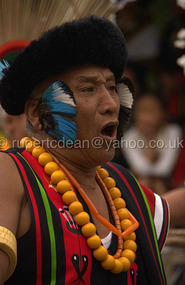
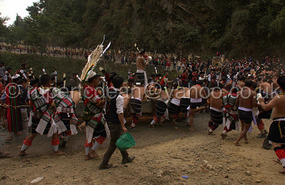
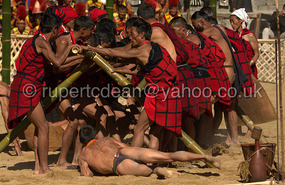
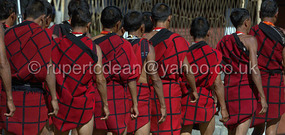
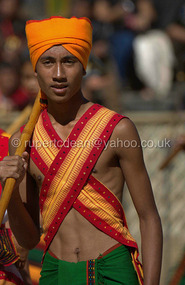
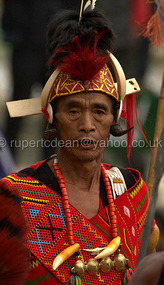
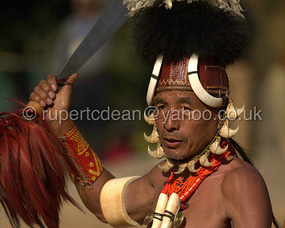
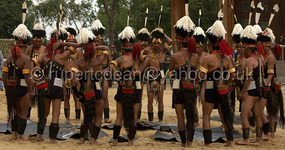
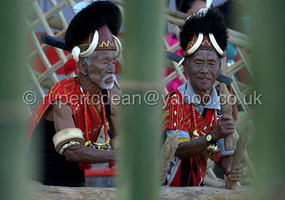






2025-05-22